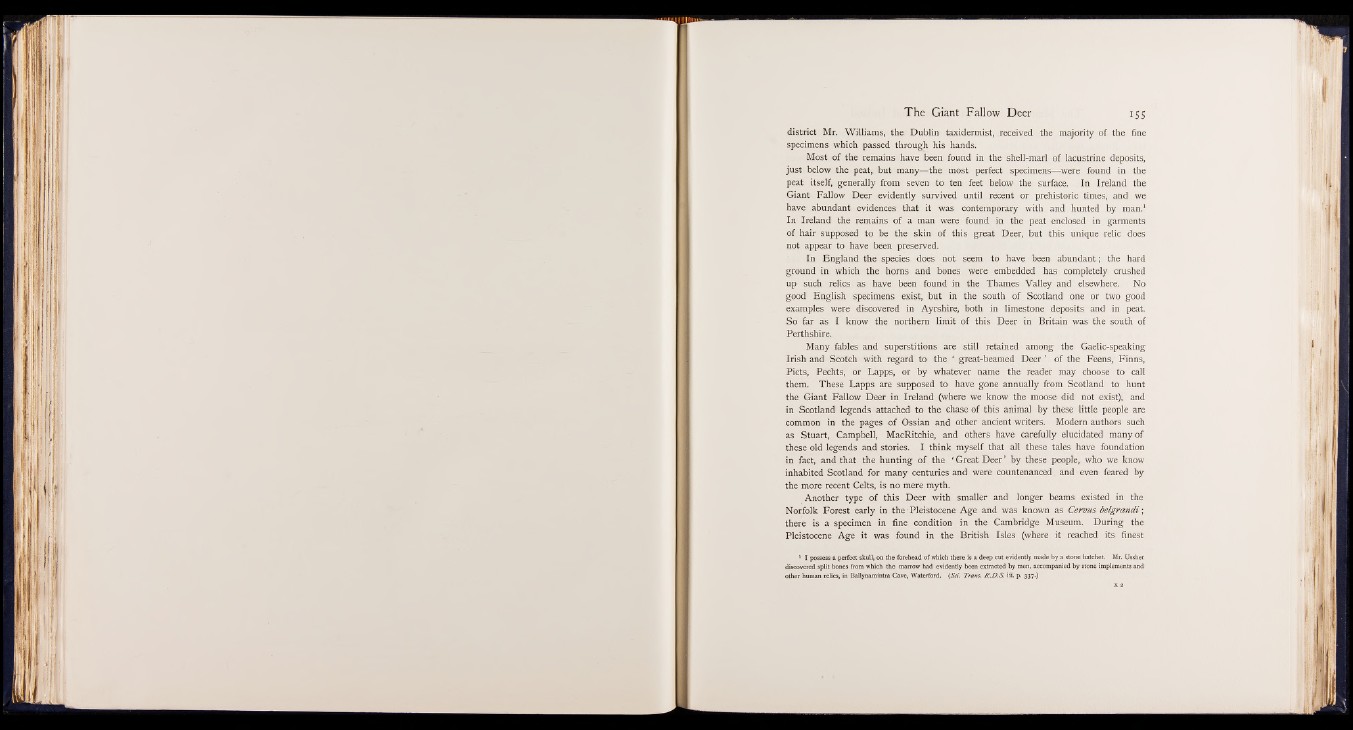
district Mr. Williams, the Dublin taxidermist, received the majority of the fine
specimens which passed through his hands.
Most of the remains have been found in the shell-marl of lacustrine deposits,
just below the peat, but many— the most perfect specimens— were found in the
peat itself, generally from seven to ten feet below the surface. In Ireland the
Giant Fallow Deer evidently survived until recent or prehistoric times, and we
have abundant evidences that it was contemporary with and hunted by man.1
In Ireland the remains of a man were found in the peat enclosed in garments
of hair supposed to be the skin of this great Deer, but this unique relic does
not appear to have been preserved.
In England the species does not seem to have been abundant; the hard
ground in which the horns and bones were embedded has completely crushed
up such relics as have been found in the Thames Valley and elsewhere. No
good English specimens exist, but in the south of Scotland one or two good
examples were discovered in Ayrshire, both in limestone deposits and in peat.
So far as I know the northern limit of this Deer in Britain was the south of
Perthshire.
Many fables and superstitions are still retained among the Gaelic-speaking
Irish and Scotch with regard to the ‘ great-beamed Deer' of the Feens, Finns,
Piets, Pechts, or Lapps, or by whatever name the reader may choose to call
them. These Lapps are supposed to have gone annually from Scotland to hunt
the Giant Fallow Deer in Ireland (where we know the moose did not exist), and
in Scotland legends attached to the chase of this animal by these little people are
common in the pages of Ossian and other ancient writers. Modern authors such
as Stuart, Campbell, MacRitchie, and others have carefully elucidated many of
these old legends and stories. I think myself that all these tales have foundation
in fact, and that the hunting of the * Great Deer ’ by these people, who we know
inhabited Scotland for many centuries and were countenanced and even feared by
the more recent Celts, is no mere myth.
Another type of this Deer with smaller and longer beams existed in the
Norfolk Forest early in the Pleistocene Age and was known as Cervus belgrandi;
there is a specimen in fine condition in the Cambridge Museum. During the
Pleistocene Age it was found in the British Isles (where it reached its finest
1 I possess a perfect skull, on the forehead of which there is a deep cut evidently made by a stone hatchet. Mr. Ussher
discovered split bones from which the marrow had evidently been extracted by men, accompanied by stone implements and
other human relics, in Ballynamintra Cave, Waterford. (Sci. Trans. H .D .S. iii. p. 337-)